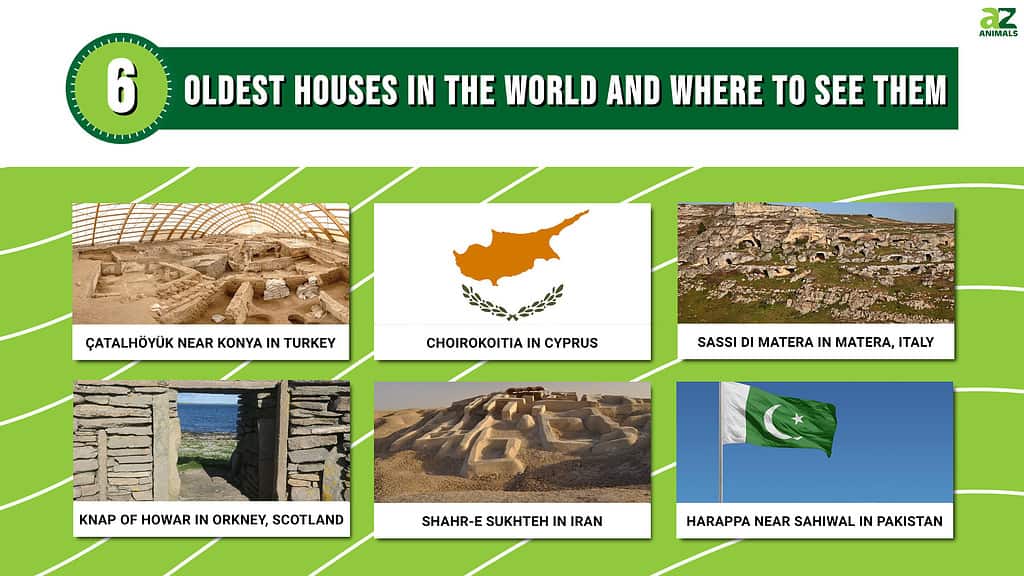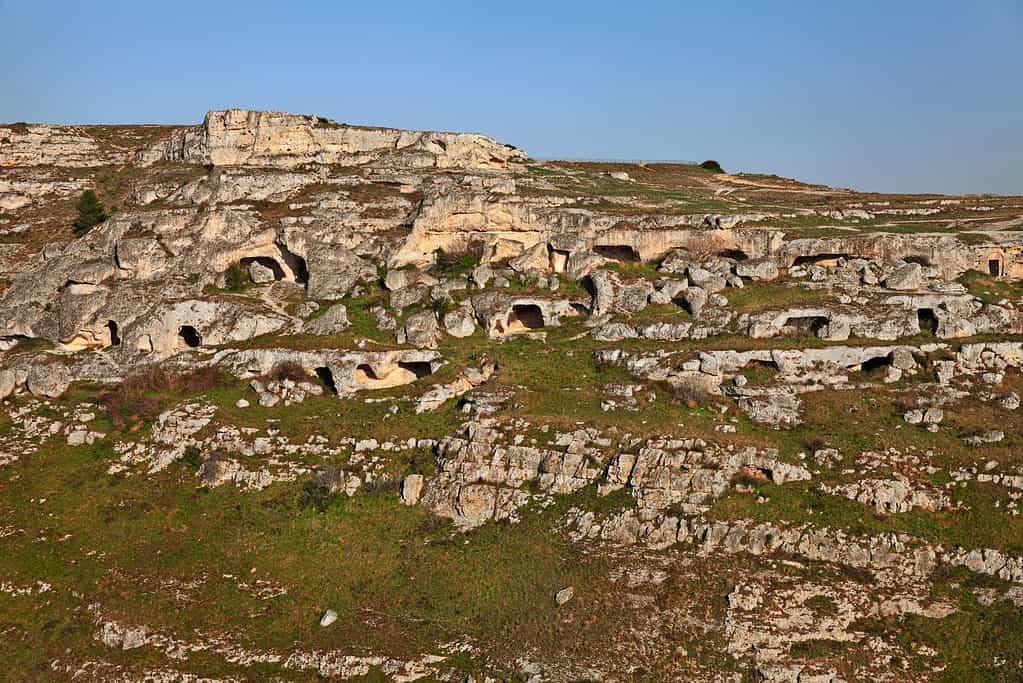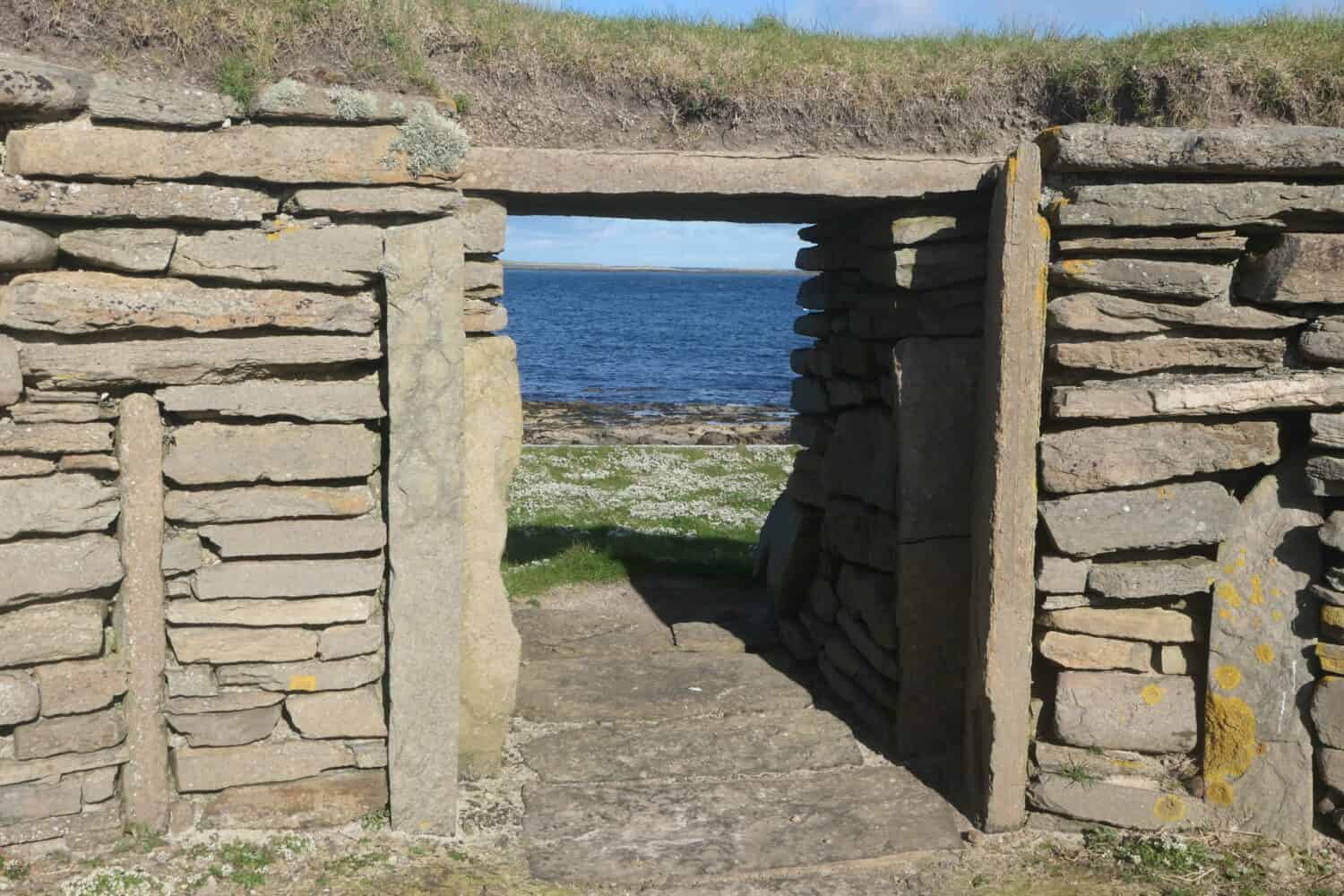A house is a building with walls and a roof that humans construct to provide shelter. Constructing houses is as old as agriculture and animal husbandry though the earliest extant homes are in ruins. Let’s discover the 6 oldest houses in the world and where to see them.

6. Harappa near Sahiwal in Pakistan: 4600 Years Old

4600 years ago, an ancient city called Harappa was built though only ruins in present-day Pakistan.
©iStock.com/Derek Brumby
Harappa in Pakistan was created about 4600 years ago and became the center of a widespread culture considered one of the 5 cradles of civilization. The Indus Valley Civilization built the city though this culture probably died out by 1300 BCE because the land became increasingly arid.
In Harappa, a part of the city was dedicated to homes near bathing areas, drains, and wells. Sun-dried mud bricks make up the majority of the ruins though the newest houses were made with artificially baked bricks. The affluent houses had half-buried terracotta jar toilets that were sometimes connected to drains which then dumped waste into outside trenches.
5. Shahr-e Sukhteh in Iran: 5200 Years Old

5200 years ago, Shahr-e Sukteh was built and contains homes made of mudbrick.
©Morteza Safataj/Shutterstock.com
Shahr-e Sukhteh was a Bronze Age city in Iran created by the Helmand Culture about 5200 years ago. The Helmand Culture interacted with the Indus Valley Civilization though the extent of their intermingling isn’t well understood.
It’s clear from the ruins that something happened that stagnated the city’s cultural development around 2000 BCE however it isn’t known why the city disappeared altogether. Nobody is sure where the inhabitants went though they most likely carried cultural influences with them to other places.
The Persian translation of the city’s name means The Burnt City which it earned because it was burned down 3 times before disappearing permanently. There were 4 stages of development during the city’s existence however a lot of details about the inhabitants’ daily lives are lost.
The homes in Shahr-e Sukhteh were all located in a part of the city dedicated solely to housing. These houses, as well as structures for other uses, were made of mudbricks. These bricks were then covered with a thatch containing lime.
4. Knap of Howar in Orkney, Scotland: 5700 Years Old

©Hannah Wheatley/Shutterstock.com
During the neolithic period about 5700 years ago, the Knap of Howar in Scotland was an active farmstead. There are two buildings on site with at least one serving as a house. These dwellings have stone walls and probably had thatched wooden roofs.
Within these old houses are stalls, benches, and cupboards made of stone that still exist today. There were also hearths within the buildings. There is evidence leading scientists to believe that the site was continuously occupied for about 500 years.
3. Sassi Di Matera in Matera, Italy: 9000 Years Old

Around 9000 years ago Sassi Di Matera was built and they still have people living in them.
©iStock.com/ermess
The Sassi Di Matera sits in two sections in the city of Matera, Italy, and dates back about 9000 years. The houses at Sassi di Matera are some of the oldest homes in Europe and they were first started by the hand carving of Stone Age inhabitants into the rock. Some caves naturally existed at the site however they have deepened because of continual labor and some of the dwellings are still in use.
The Romans built a wall around this ancient city though by the eighth century the population had grown too big to be contained by this wall. In the thirteenth century, a Romanesque cathedral was built between the two sections of Matera that make up the Sassi. While there are extant buildings from subsequent centuries scattered throughout the Sassi’s neighborhoods for a variety of uses, the modern accommodations and restaurants adhere to strict building rules.
2. Choirokoitia in Cyprus: 9025 Years Old

Cyprus is home to some of the oldest houses in the world at 9025 years old.
©Jo Best/Shutterstock.com
At Choirokoitia, there are ruins of houses as old as 9025 years. Because of its age, Choirokoitia showcases the pre-ceramic neolithic style that existed in Cyprus at that time. The organization in this settlement demonstrates that the oldest cultures were using predetermined architectural plans while also working together to improve a collective quality of life.
This city is unique because it shows some of the oldest evidence of communal defenses. These defenses were built on account of the community as a whole. Houses were made of mudbrick and multiple circular homes were centered on an outdoor space used for daily living tasks.
Dead individuals were buried under floors made of pounded dirt within the houses although nobody knows why. Near the ruins are reconstructions based on archaeological finds for modern people to experience.
1. Çatalhöyük near Konya in Turkey: Up to 9500 Years Old

The oldest houses in the world at Catalhoyuk are around 9500 years old.
©NiglayNik/Shutterstock.com
Catalhoyuk is an old Stone and Copper Age settlement located near Konya in Turkey with dwellings dating back 9500 years. The city was abandoned a little more than 8000 years ago and played host to up to 10,000 people at a time.
It looks like hills from a distance as its two mounds contain layers of debris from generations of humans that continually inhabited the site. The eastern mound is more ancient than the one to its west.
When the city began, the area it was located in was a humid wetland with consistent rain which means that resources were plentiful. Around 6500 BCE, new cookware was invented as the population boomed in response to the appearance of domesticated animals. Although resources were plentiful for a time, the land became drier and more inhospitable over time.
All of the buildings in Catalhoyuk are private houses and as a result, there are no defined public spaces. These homes were made of mudbricks dried in the sun and they were clustered on top of each other. As a result of this clustering, the roofs were used as walkways with doors usually through the ceiling.
Summary of the 6 Oldest Houses in the World
| Name of Houses | Age of Houses | Where to See the Houses | |
|---|---|---|---|
| 1 | Catalhoyuk | 9500 Years Old | Konya, Turkey |
| 2 | Choirokoitia | 9025 Years Old | Cyprus |
| 3 | Sassi Di Matera | 9000 Years Old | Matera, Italy |
| 4 | Knap of Howar | 5700 Years Old | Orkney, Scotland |
| 5 | Shahr-e Sukhteh | 5200 Years Old | Eastern Iran |
| 6 | Harappa | 4600 Years Old | Sahiwal, Pakistan |
Thank you for reading! Have some feedback for us? Contact the AZ Animals editorial team.








